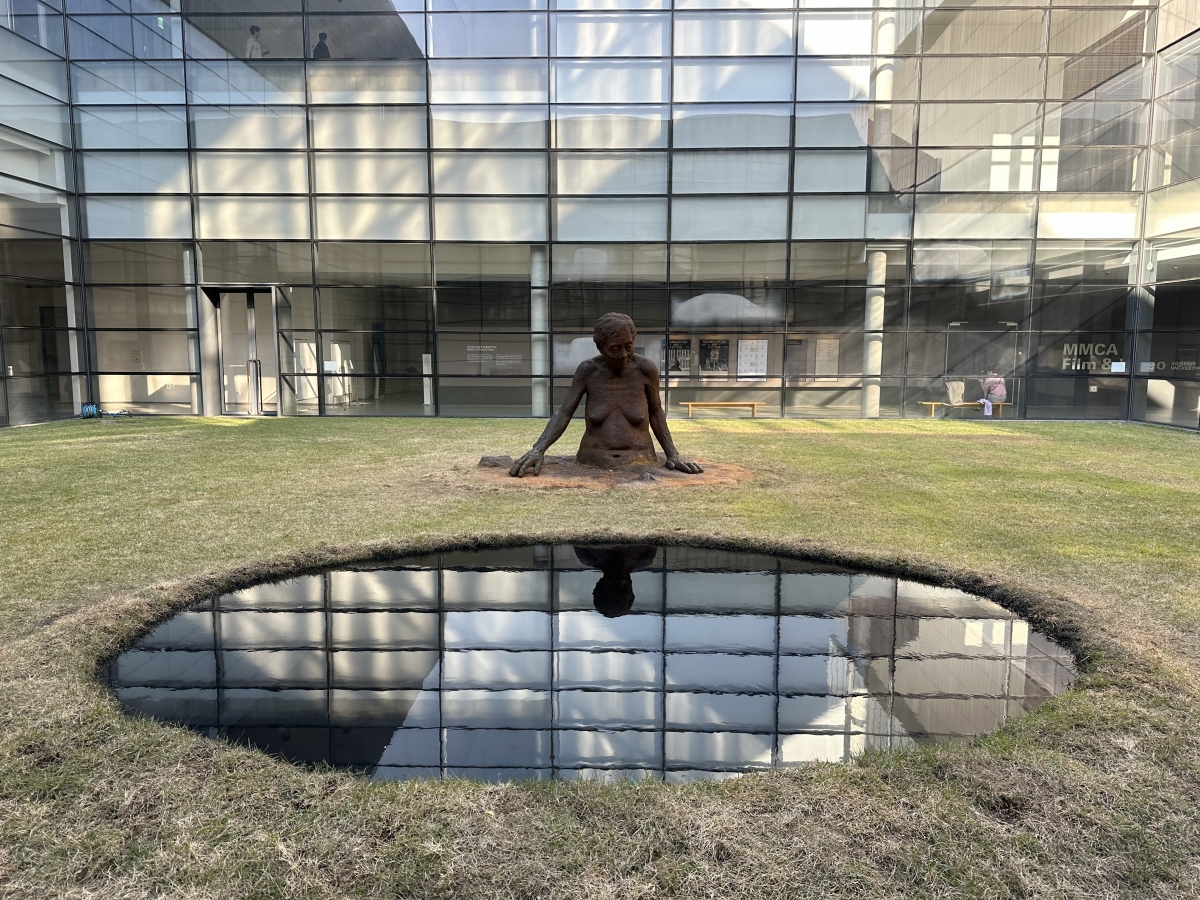SPACE January 2023 (No. 662)

View of Gallery Madang / Image courtesy of MMCA
The exhibition ‘Lim Ok-sang: Here, the Rising Land’ that looks back over the past 40 years of work by the Korean realist and Minjung artist Lim Oksang has been on show from Oct. 21 at the National Museum of Modern and Contemporary Art (MMCA), Seoul. The exhibition showcases a total of 40 artworks including the three new large-scale installations as well as a note archive containing Lim’s daily drawings and writings. Divided under the themes ‘HERE’, ‘RISING’, and ‘LAND’, the artworks fill up the spaces of Gallery 6, Gallery 7, and Gallery Madang. The section HERE at Gallery 7 recalls Lim’s first solo exhibition (1981). Alongside his continued commitments in social issues, the artist often engages with the physical world by using natural materials such as water, fire, earth, and tree. The exhibition was curated in such a way that the visitors would walk between the artworks. As one walks past paintings such as Puddle (1976), Barley Field (1983), and Freshly Drawn Water (1997) – an artwork that uses hanji – one arrives at Lim’s earth landscape paintings in the 2010s where one may then observe that his art world begins and ends with the earth. On the other hand, the large-scale installations can be found in Gallery 6 under the theme RISING. Here, the Rising Land (2022) is a massive earth wall of 12×12m that was built with ‘real’ earth dug from Jangdan Plain near Imjingang River. The earth that houses the footsteps of farmers, traces of unknown organisms, and the base of rice sheafs transfers the texture, colour, and smell in its raw state and reminds us of the land and life-existence that was once forgotten. As visitors exit the exhibition hall, one encounters Black Puddle (2022). What might the reason be for this puddle, which the artist refers to as the ‘windpipe’ of the earth, to be coloured in black? The sorrowful expression in the opposite-facing artwork, The Earth-Mother (1993), seems to be asking us that question. The exhibition will be on display until Mar. 12.




